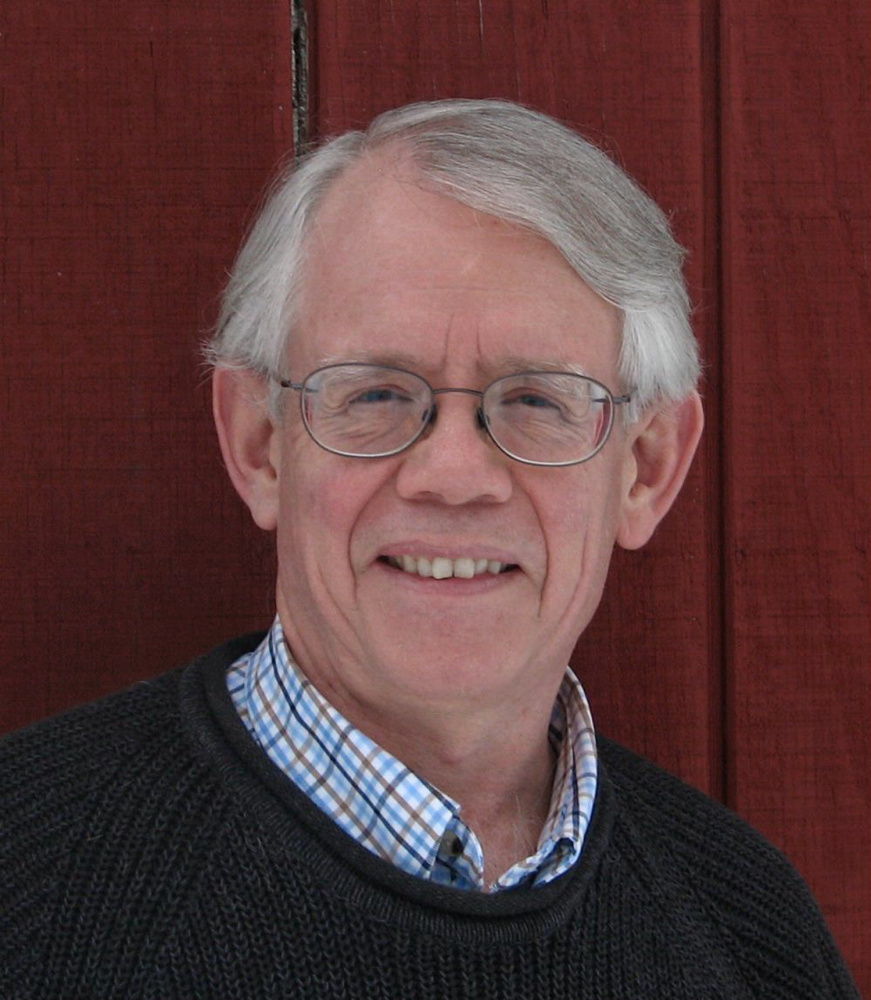Harold Stover was for many years an important figure in New York City organ circles, but in 1992, he left Manhattan for Portland, where he seems to have been thriving, not only as an organist and choir director – he conducts the excellent Renaissance Voices – but as a composer as well. Having heard Stover play some of his colorful, inventive music in New York, I was hoping he might include a recent work or two at his recital on Thursday afternoon, when he played on the Portland Conservatory’s Noonday Concert Series at the First Parish Unitarian Universalist Church.
As it turned out, he chose not to play anything of his own this time, but what he offered instead was hardly cause for complaint. His program was devoted mostly to the music of Bach, with a work each by Johann Pachelbel and Georg Böhm, two of Bach’s most important and influential predecessors. Including those pieces was a thoughtful touch: By adding context and perspective to Stover’s Bach performances, they transformed the program into a concise, 40-minute overview of Bach’s world.
Stover began with “Allein Gott in der Höh sei Ehr” (“To God Alone on High Be Glory,” BWV 715), a chorale prelude that may date from Bach’s brief tenure as a church organist in Arnstadt, when he was in his early 20s. Bach is outgoing and adventurous here, and you can almost understand why the members of the Arnstadt Consistory were so scathing in their 1706 evaluation of his work. The piece was, after all, meant to accompany the congregation’s singing of the hymn, with Bach supplying uplifting improvisations between the verses. But Bach’s chorale settings moved aggressively beyond the simplicity his employers and their congregants expected, clothing them in counterpoint and dissonances that sound magnificent today but were shocking at the time.
The roots of Bach’s penchant for showiness can be found in the music of Pachelbel, who counted Bach’s older brother, Christoph, among his students, and Böhm, who may have taught Bach himself. (A third influence, whose music Stover did not play, was Dietrich Buxtehude, whose playing Bach famously walked 200 miles to hear during his Arnstadt years.)
Stover’s Pachelbel selection, a set of variations on the chorale “Was Got tut, das ist wohlgetan” (“What God Does is Well Done”), seemed remarkably subtle, heard after the extravagances of Bach’s “Allein Gott in der Höh sei Her.” However elaborate Pachelbel’s variations became in the course of the work, the chorale melody was always in focus and always at the same tempo. This cantus firmus chorale style was one of Pachelbel’s signatures, and its influence on Bach became clear later in the program, when Stover played another of Bach’s chorale preludes, “Von Gott will ich nicht lassen” (“I Will Not Forsake the Lord,” BWV 658), which takes a similar approach.
The Böhm work, a Praeludium in D minor, begins with a robust pedal introduction and conveys a sense of the freewheeling, improvisatory workouts organists of the time prided themselves upon. And here, too, Stover drew a direct line to Bach, whose spirited Prelude and Fugue in C major (BWV 545), though brief, is brimming over with exploratory expansions.
Textural transparency and an unerring approach to color have long been hallmarks of Stover’s style, and they remain so. His registration in the Pachelbel was impeccably varied and yielded a clear sense of the work’s structure, and his coloration in the Böhm and Bach works seemed to magnify the music’s already considerable energy.
Allan Kozinn is a former music critic and culture writer for The New York Times who lives in Portland. He can be contacted at:
allankozinn@gmail.com
Twitter: kozinn
Copy the Story LinkSend questions/comments to the editors.



Success. Please wait for the page to reload. If the page does not reload within 5 seconds, please refresh the page.
Enter your email and password to access comments.
Hi, to comment on stories you must . This profile is in addition to your subscription and website login.
Already have a commenting profile? .
Invalid username/password.
Please check your email to confirm and complete your registration.
Only subscribers are eligible to post comments. Please subscribe or login first for digital access. Here’s why.
Use the form below to reset your password. When you've submitted your account email, we will send an email with a reset code.